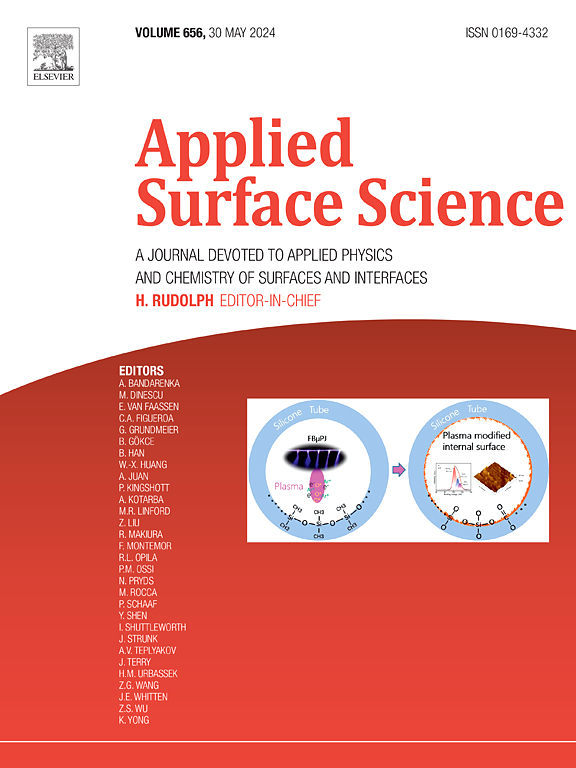Plasma treated gold nanofilms enhance surface-assisted redox activity in electrochemical processes
IF 6.3
2区 材料科学
Q2 CHEMISTRY, PHYSICAL
引用次数: 0
Abstract
Surface-assisted catalytic activities of two-dimensional (2D) materials are gaining prominence due to their tunable surface area, enhanced active sites, and unique structural properties. In this study, we demonstrate the preparation of a highly reactive gold nanofilm (GNF) with a face-centered cubic structure via thermal deposition, followed by atmospheric nitrogen plasma treatment. X-ray photoelectron spectroscopy (XPS) revealed that plasma treatment increased surface hydroxyl and carbonyl groups, introducing nitrogen as metal-nitride and C-NH2 species. Raman spectroscopy further confirmed the incorporation of nitrogen and oxygen functionalities, with intense peaks at 790 cm−1 and 946 cm−1, indicating successful surface activation. The electrochemical behavior of the plasma-treated GNF was evaluated using the [FeIII/II(CN)6]3−/4− redox system through cyclic voltammetry. Notably, the plasma-treated GNF exhibited a substantial increase in anodic and cathodic peak current densities, with the electrochemically active surface area increasing by approximately 276 % and 400 %, respectively, compared to untreated GNF. This enhancement in redox reactivity underscores the potential of plasma-treated GNFs in boosting surface-assisted redox processes. The findings suggest that plasma-modified 2D surfaces hold significant promise for advancing electrochemical sensing and catalysis, offering improved efficiency and reactivity for a range of applications.

等离子体处理的金纳米膜在电化学过程中增强了表面辅助氧化还原活性
二维(2D)材料的表面辅助催化活性由于其可调节的表面积、增强的活性位点和独特的结构性质而日益突出。在这项研究中,我们展示了通过热沉积制备具有面心立方结构的高活性金纳米膜(GNF),然后进行大气氮等离子体处理。x射线光电子能谱(XPS)显示等离子体处理增加了表面羟基和羰基,引入氮作为金属氮化物和C-NH2物质。拉曼光谱进一步证实了氮和氧官能团的结合,在790 cm−1和946 cm−1处有强烈的峰,表明表面活化成功。采用[FeIII/II(CN)6]3−/4−氧化还原体系,通过循环伏安法评价了等离子体处理后GNF的电化学行为。值得注意的是,与未处理的GNF相比,等离子体处理的GNF表现出阳极和阴极峰值电流密度的显著增加,电化学活性表面积分别增加了约276 %和400 %。这种氧化还原反应性的增强强调了等离子体处理的GNFs在促进表面辅助氧化还原过程中的潜力。研究结果表明,等离子体修饰的二维表面在推进电化学传感和催化方面具有重要的前景,为一系列应用提供了更高的效率和反应性。
本文章由计算机程序翻译,如有差异,请以英文原文为准。
求助全文
约1分钟内获得全文
求助全文
来源期刊

Applied Surface Science
工程技术-材料科学:膜
CiteScore
12.50
自引率
7.50%
发文量
3393
审稿时长
67 days
期刊介绍:
Applied Surface Science covers topics contributing to a better understanding of surfaces, interfaces, nanostructures and their applications. The journal is concerned with scientific research on the atomic and molecular level of material properties determined with specific surface analytical techniques and/or computational methods, as well as the processing of such structures.
 求助内容:
求助内容: 应助结果提醒方式:
应助结果提醒方式:


